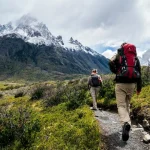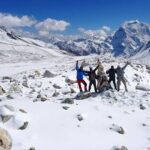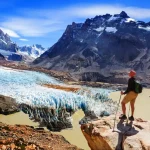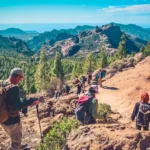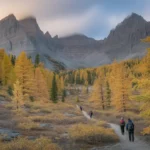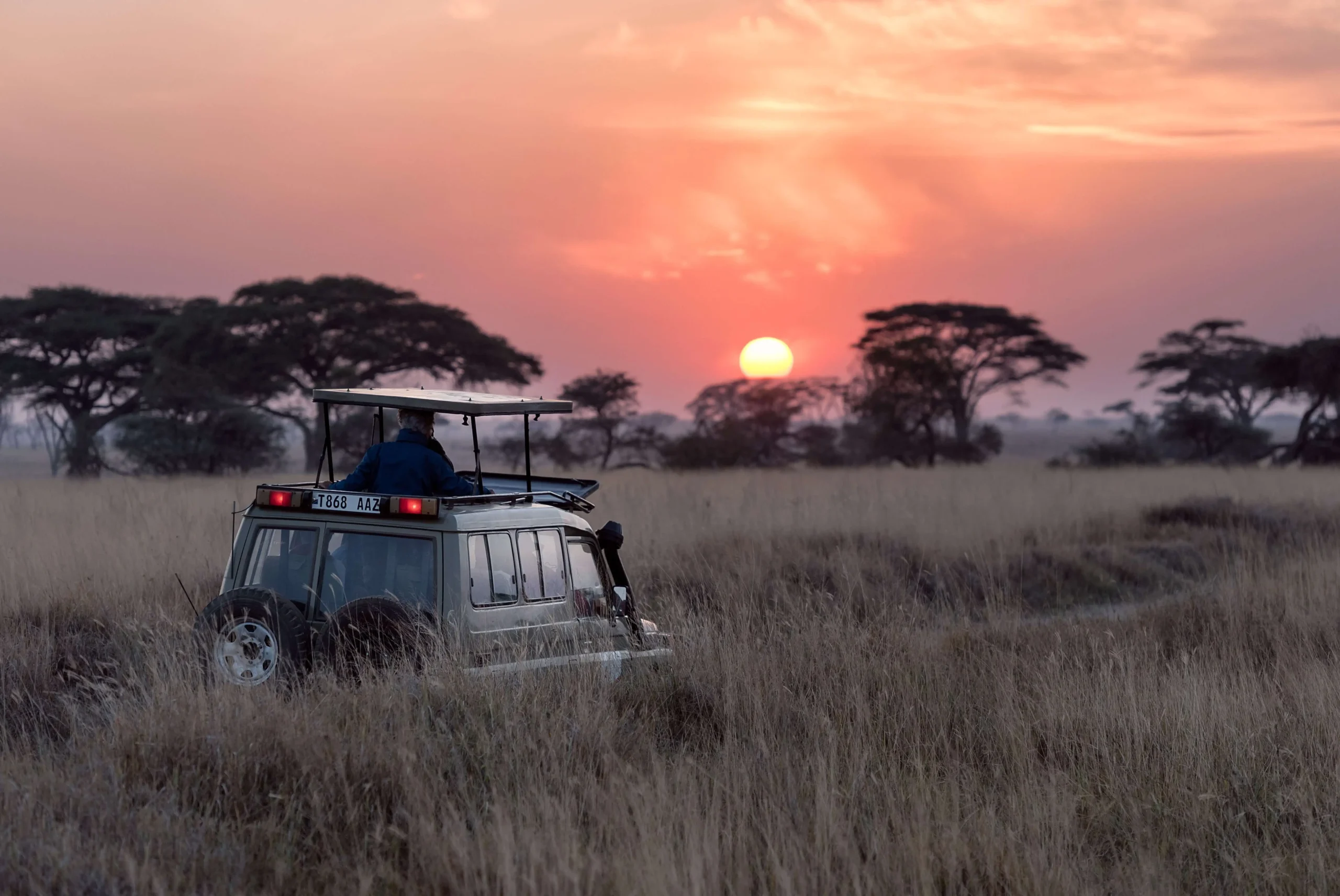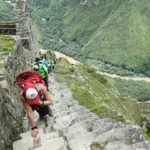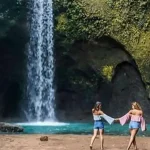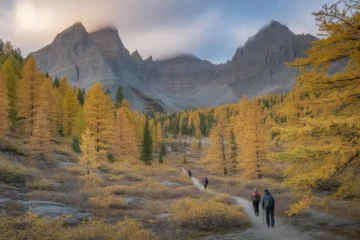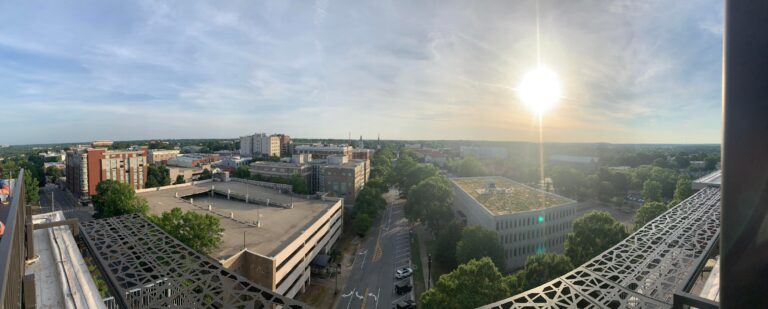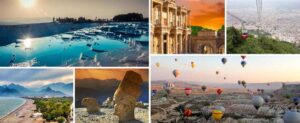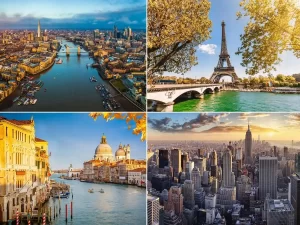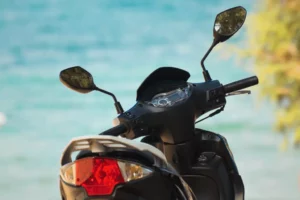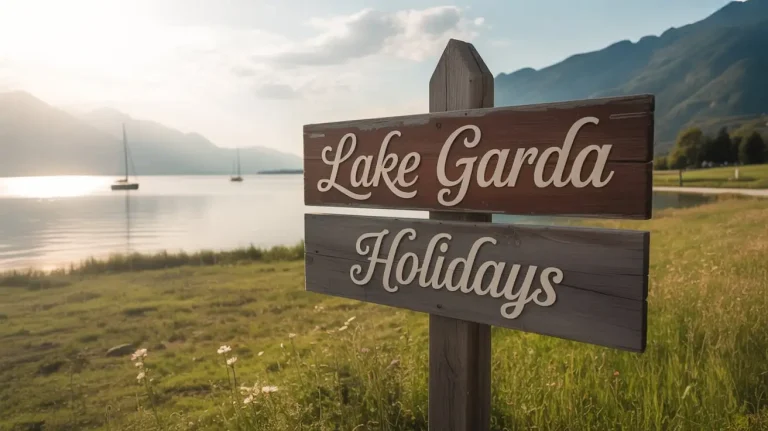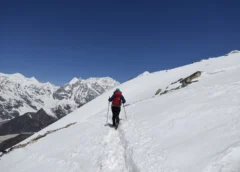
Challenging Treks in Nepal: Conquer the Himalayas’ Most Demanding Trails
April 21, 2025
Nepal, the land of towering peaks and ancient trails, is a dream destination for trekkers around the globe.
While there are numerous treks suited for all skill levels, the true adventurers seek the paths less traveled, the ones that test endurance, determination, and spirit.
For those who crave a challenge, here are eight of the most demanding treks in Nepal. These treks promise not only the thrill of conquering some of the world’s highest and most rugged terrains but also the reward of breathtaking vistas and unforgettable experiences.
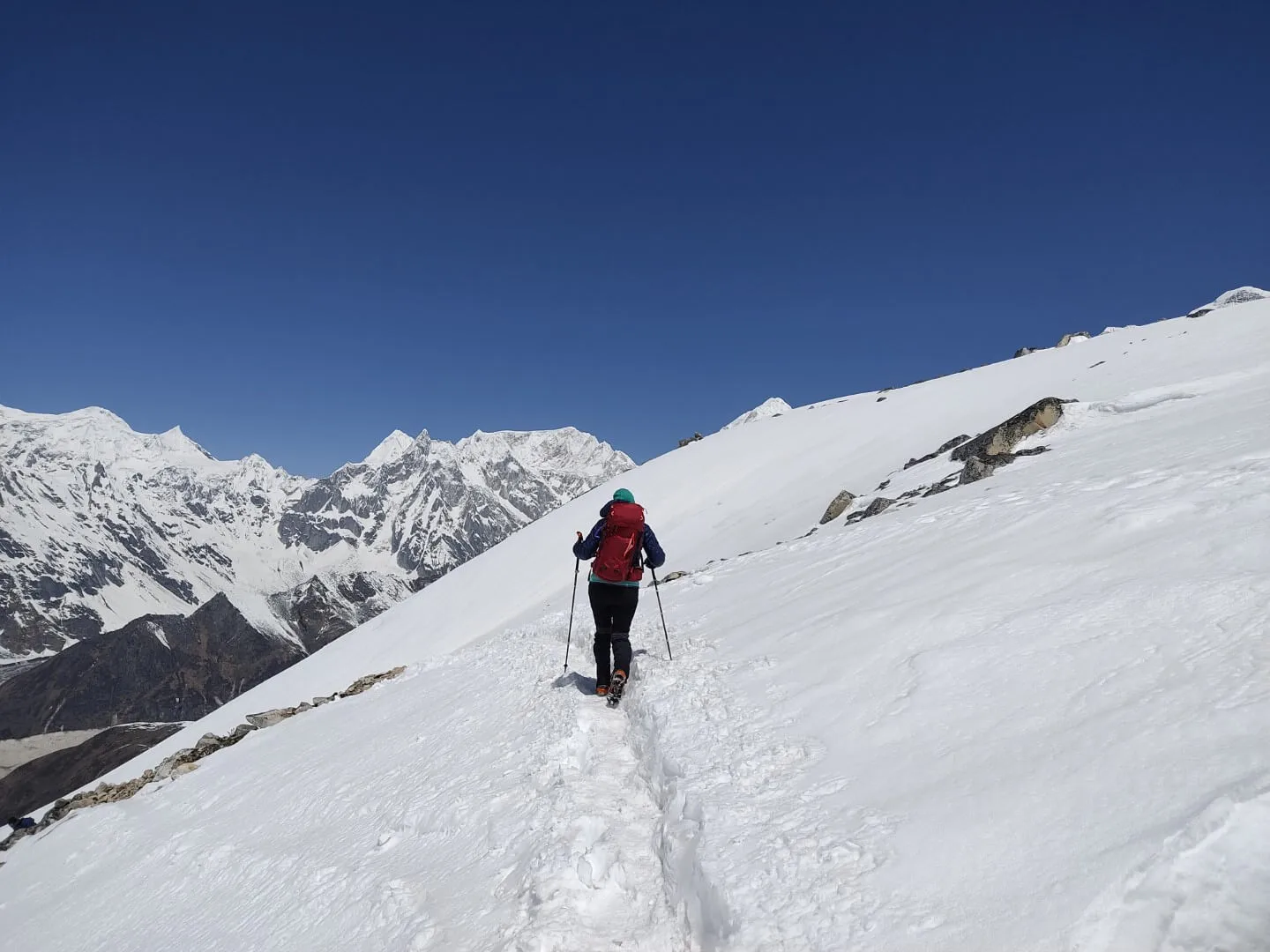
Content
1. Everest Three Passes Trek
The Everest Three Passes Trek is a true test of physical and mental stamina, offering an intense yet incredibly rewarding journey through the heart of the Khumbu region.
This trek is challenging due to the high altitudes and the crossing of three major passes: Kongma La (5,535m/18,159ft), Cho La (5,420m/17,782ft), and Renjo La (5,360m/17,585ft).
Each pass presents its own set of difficulties, from steep ascents to glaciated paths, demanding trekkers to be in top physical condition.
The trek typically takes about 18-21 days to complete, and trekkers are rewarded with spectacular views of Mount Everest (8,848m/29,029ft), Lhotse (8,516m/27,940ft), Makalu (8,481m/27,825ft), and Cho Oyu (8,188m/26,864ft).
The best season for this trek is from late September to November and from March to May, when the weather is relatively stable.
Accommodation along the route varies from basic teahouses to more comfortable lodges, but the remoteness means facilities are often limited.
Trekkers must be prepared for extreme weather conditions, possible altitude sickness, and the need for high-level fitness.
2. Manaslu Circuit Trek
The Manaslu Circuit Trek is one of the most remote and less-trodden paths in Nepal, circumnavigating the majestic Mount Manaslu (8,163m/26,781ft), the world’s eighth-highest mountain.
This trek is challenging due to its high altitude, isolated terrain, and the crossing of the Larkya La Pass (5,160m/16,929ft), which is often snow-covered and slippery.
The trek takes about 14-18 days, starting from Soti Khola and ending in Besisahar, the gateway to the Annapurna region. What makes the Manaslu Circuit Trek especially challenging is its combination of long days of walking, significant altitude gain, and the remote nature of the trail.
However, the rewards are immense: panoramic views of Manaslu, cultural encounters with Tibetan-influenced communities, and the unspoiled beauty of the Manaslu Conservation Area.
The best time to trek here is during the autumn (September to November) and spring (March to May) seasons. Accommodation is relatively basic, with teahouses offering simple meals and lodging, but the rugged charm and tranquility of the region more than make up for the lack of luxury.
3. Nar Phu Valley Trek
The Nar Phu Valley Trek is a hidden gem in the Annapurna region, taking trekkers off the beaten path to the remote valleys of Nar and Phu. This trek is often combined with the Annapurna Circuit Trek, making it an extended and more challenging journey.
What makes the Nar Phu Valley Trek difficult is the rugged terrain, high altitudes, and the crossing of the Kang La Pass (5,320m/17,454ft). The trek typically takes about 17-21 days, starting from Jagat, with the Nar and Phu valleys being the main highlights.
The trek is a journey through a lost world of medieval villages, ancient Buddhist monasteries, and dramatic rock formations, all set against the backdrop of the Annapurna and Dhaulagiri ranges.
The Nar Phu Valley Trek is best undertaken in the autumn and spring seasons, when the weather is clear, and the trails are accessible. Accommodation is basic, with limited teahouses in the Nar and Phu villages, so trekkers should be prepared for rustic conditions.
Due to the high altitude and remote location, this trek is recommended for experienced trekkers with a high level of fitness.
4. Makalu Base Camp Trek
The Makalu Base Camp Trek is one of the most challenging treks in Nepal, taking adventurers to the base of the world’s fifth-highest mountain, Mount Makalu (8,485m/27,838ft).
The trek is demanding due to its remote location, steep ascents, and the need to cross the Shipton La (4,220m/13,845ft) and Keke La (4,170m/13,680ft) passes. It takes about 20-24 days to complete, with the trail starting from Tumlingtar and winding through the Makalu Barun National Park.
The trek offers stunning views of Mount Makalu, Everest, Lhotse, and Baruntse, but also presents challenges like unpredictable weather, tough terrain, and high altitudes. The best season for this trek is from April to May and from September to November.
Accommodation is basic, with teahouses offering simple lodging and food, but the remoteness and serenity of the region make it a truly special experience.
Trekkers need to be well-prepared, with a high level of fitness, proper gear, and a strong mental resolve to tackle the difficulties of this trek.
5. Kanchenjunga Base Camp Trek
The Kanchenjunga Base Camp Trek is one of the most remote and least-visited treks in Nepal, taking trekkers to the base of the world’s third-highest mountain, Mount Kanchenjunga (8,586m/28,169ft).
The trek is challenging due to its length, altitude, and the remoteness of the region. It takes about 20-26 days to complete, starting from Taplejung and traversing through the Kanchenjunga Conservation Area.
The trek involves crossing several high passes, including the Sele La Pass (4,290m/14,075ft), and offers stunning views of Kanchenjunga, Jannu (7,710m/25,295ft), and the surrounding peaks.
The trek is best done in the autumn and spring seasons, when the weather is stable and the views are clear. Accommodation is very basic, with few teahouses along the route, so trekkers must be prepared for rustic conditions and possibly camping in some areas.
The Kanchenjunga Base Camp Trek is recommended for experienced trekkers who are looking for a remote and challenging adventure far from the crowds.
6. Dhaulagiri Circuit Trek
The Dhaulagiri Circuit Trek is one of the most demanding treks in Nepal, encircling the mighty Dhaulagiri massif (8,167m/26,795ft), the seventh-highest mountain in the world.
This trek is challenging due to its high altitude, remote location, and the need to cross two major passes: the French Pass (5,360m/17,585ft) and the Dhampus Pass (5,240m/17,192ft).
The trek typically takes about 18-22 days, starting from Beni and ending in Jomsom. The Dhaulagiri Circuit Trek offers trekkers a unique opportunity to explore the rugged and isolated region of western Nepal, with spectacular views of Dhaulagiri, Tukuche Peak (6,920m/22,703ft), and the Annapurna range.
The best time for this trek is in the autumn (September to November) and spring (March to May) seasons. Accommodation is mostly in tents, as there are few teahouses along the route, so trekkers must be prepared for camping in harsh conditions.
This trek is recommended for experienced and well-prepared trekkers with a high level of fitness and a sense of adventure.
7. Upper Dolpo Trek
The Upper Dolpo Trek is a journey into one of the most remote and culturally rich regions of Nepal, offering a challenging and rewarding experience for seasoned trekkers.
The trek is difficult due to its high altitude, isolation, and the need to cross several high passes, including the Kang La Pass (5,151m/16,899ft) and the Shey La Pass (5,200m/17,060ft). The trek takes about 24-30 days to complete, starting from Juphal and exploring the mystical land of Dolpo, known for its Tibetan Buddhist culture, ancient monasteries, and pristine landscapes.
The trek offers stunning views of the Dhaulagiri range and the chance to visit the Shey Phoksundo Lake, one of the most beautiful and sacred lakes in Nepal. The best season for this trek is from June to September, as the region lies in the rain shadow of the Himalayas and is unaffected by the monsoon.
Accommodation is basic, with teahouses and campsites along the route, but the cultural and natural beauty of Upper Dolpo makes it a trek like no other.
This trek is recommended for experienced trekkers who are looking for an off-the-beaten-path adventure in one of Nepal’s most isolated regions.
8. Makalu Base Camp Trek
The Makalu Base Camp Trek is a true wilderness trek, taking adventurers to the base of Mount Makalu, the fifth-highest peak in the world.
This trek is demanding due to its remoteness, high altitudes, and the challenging terrain, including crossing the Shipton La (4,220m/13,845ft) and Keke La (4,170m/13,680ft) passes.
The trek takes about 20-24 days to complete, starting from Tumlingtar and winding through the Makalu Barun National Park. Trekkers are rewarded with stunning views of Mount Makalu, Everest, Lhotse, and Baruntse, as well as the chance to explore one of the most unspoiled regions in Nepal.
The best time for this trek is in the spring (April to May) and autumn (September to November) seasons. Accommodation is basic, with teahouses offering simple meals and lodging, but the remoteness and serenity of the region make it a truly special experience.
Due to the high altitude and challenging conditions, this trek is recommended for experienced trekkers with a high level of fitness and the ability to handle tough environments.
Conclusion
Challenging treks in Nepal offer a unique opportunity to explore some of the most remote and beautiful regions of the Himalayas. These treks are not for the faint-hearted but for those who seek adventure, challenge, and the ultimate reward of standing amidst some of the world’s highest peaks.
Whether you’re crossing high passes, navigating rugged terrains, or immersing yourself in the cultural richness of isolated communities, these treks promise an unforgettable experience.
Prepare well, respect the mountains, and embark on a journey that will test your limits and leave you with memories to last a lifetime.
Nepal’s most challenging treks, such as the Nar Phu Valley and Makalu Base Camp, offer seasoned adventurers a blend of rugged terrain, high-altitude passes, and remote Himalayan landscapes. These demanding routes test endurance and reward with breathtaking vistas. For brands aiming to connect with this niche audience of thrill-seekers and nature enthusiasts, Advertise with us to reach a dedicated community passionate about high-altitude adventures.

Linda Lucero is a travel blogger from the US. She loves to meet new people and explore new cultures, as well as try delicious foods. Linda’s blog is full of her adventures around the world! In her spare time, she likes reading books about other cultures and how they might be different from what she knows in the United States.

